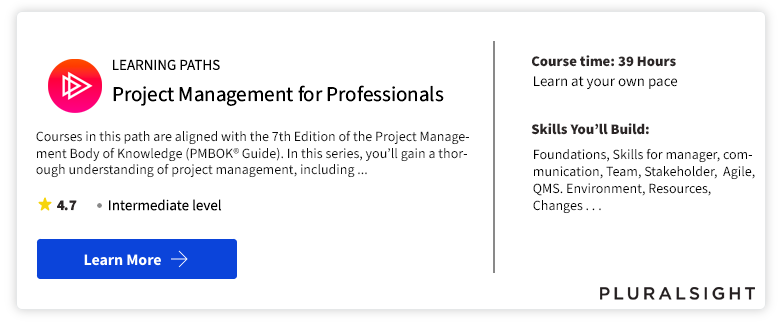Starting with the concept to commissioning of projects, we may need different types of cost estimates. Obviously, their level or degree of accuracy is dependent upon the type and detail of information and data available at that stage of the project.
Types of Cost Estimates
Order-of-Magnitude Cost Estimates
This type of cost estimate is made without any detailed engineering data. This cost estimate may be accurate ± 25% within the scope of the project. It may be based on past experience in India or abroad with foreign principals or it he based on capacity estimates. Companies operating in international project business use quite a great of information from their home projects and use broad ‘scaling factors’ to obtain the cost in the currency of the customer country.
Another broad parameter used is in terms of rupee crores per megawatt of electricity generation for power plants, per kilometer railway track in plains or per kilometer of railway electrification for single, double, triple or quadruple tracts or per kilometer of road (to a known specification) to be constructed. These order-of-magnitude cost estimates are useful for preliminary discussions and project formulation.
Approximate Cost Estimate (PFR Estimates)
Also called top-down estimate, it is done without detailed engineering data and may be accurate +15%. This type of estimate is undertaken at the time of Preliminary Feasibility Report (PFR) stage. Here we use various techniques of costing like pro-rata estimate from experience of doing similar projects in the past and updating for inflation.
It may also be described as estimating by analogy or rule of thumb estimates. We extensively use indexing costs of similar activities. These are adjusted for capacity and technology. Since detailed engineering data is not available, estimator is likely to conclude that since this component is 20% more difficult than a similar one completed in another project, it is likely to cost 20% more overall or in terms of materials or labour or overhead, as appropriate.
Economic Feasibility Cost Estimate (TEFR Estimates)
As we progress further in the project formulation, we are to prepare an Economic Feasibility Cost Estimate of the project. This is used for working out the product cost and pricing and consequently the profitability analysis of the project depends on this cost estimate. This is based on a reasonable degree of detailed engineering data and should be accurate + 10% for Techno Economic Feasibility Report (TEFR) stage.
This exercise is blown up into many details. Function-wise and for specialist equipment; budget quotations from vendors are also obtained. A great deal of cost data compiled from past projects, is used extensively so as to obtain accurate cost estimates of all main plant items (within the battery limits) and for all service or utility plants and systems outside the battery limits. For each type of equipment used or system installed, it is possible to compile overall cost data and the same can be used at this stage for arriving at Economic Feasibility Cost Estimate.
This cost estimate formed the basis of companies applying to Government of India for obtaining industrial licence and for capital goods licence for imported plant and machinery. With deregulation, it is required only for industries on the restricted list.
Detailed Project Cost Estimate (DPR Estimates)
As we progress further with the project formulation, a number of aspects get defined. Some preliminary drawings like layouts, process flow diagrams, piping and instruments (also called engineering line) diagrams are prepared and company firms up its action plan by preparing a detailed project cost estimate – corresponding to Detailed Project Report (DPR) stage and is expected to be accurate to + 5%. At this state, costing exercise is very detailed and costs of all major plant items are supported by proper price quotations from the intended suppliers. Even at this stage. Cost of construction and erection labour and cost of overheads are estimated factorial.
Control Cost Estimates
After making some progress on the basic design viz. drawing up of the detailed schemes, flow diagrams and layouts, a very detailed exercise on cost estimates is undertaken.
When basic documents as above are sufficiently frozen, we have, more or less, defined the scope of the project in hand. Consequently, the aim is to arrive at an accuracy of + 2.5% although it may be more precise to say that is lower than + 5% as achieving an accuracy lower than +5% is very much dependent upon economic stability, inflationary trends on prices, the balance of payment, fluctuations in the currency exchange rate, etc.
As the name signifies, these estimates are used for controlling the costs while plant and equipment are being designed, indented and ordered and serve as a very useful frame for controlling expenses as they are incurred.
Until the Control Cost Estimates (CCE) are finalized, the previous DPR estimates are used for indenting and ordering any critical long-delivery items of equipment and the same figures are adopted/incorporated into the CCE.
Best Project Management Courses
Project management skills are in demand. If you are ready to get started, consider enrolling in the Google Project Management: Professional Certificate Learn the job-ready essentials of project management in six months or less, such as initiating projects, risk management and change management. Also we have made list of best project management courses as there are a plethora of options available, and it can be challenging to identify the best one.
Best Project Management Tool
Best for:
- Mid & Large Size Team
- Higher Plan
- Standard Feature
- Flexible Database & Stability
Best for:
- Small & Growing Team
- Smaller Plan
- Standout Feature
- Try New Feature
The ideal project management tool selection will eventually rely on the particular requirements of your team. We suggest experimenting with the free versions of various tools to gauge your team’s comfort level and then proceeding accordingly.
Project Management Tutorial
(Click on Topic to Read)
- What is Project Management?
- Functions of Project Management
- What is Project?
- Project Managers
- What is Project Life Cycle?
- Project Feasibility Study
- What is Project Analysis?
- What is Project Planning?
- What is Project Selection?
- What is Project Schedule?
- What is Project Budget?
- What is Project Risk Management?
- What is Project Control?
- Project Management Body of Knowledge (PMBOK)
- Best Project Management Tools
- What is Project Organisation?
- What is Project Contract?
- Types of Cost Estimates
- What is Project Execution Plan?
- Work Breakdown Structure (WBS)
- Project Scope Management
- Project Scheduling Tools and Techniques
- Project Risk Identification
- Risk Monitoring
- Allocating Scarce Resources in IT Project
- Goldratt’s Critical Chain
- Communication in Project Management | Case Study
- Plan Monitor Control Cycle in Project Management
- Reporting in Project Management
- IT Project Quality Plan
- Project Outsourcing of Software Development
- Implementation Plan of Software Project
- What is Project Implementation?
- What is Project Closure?
- What is Project Evaluation?
- Software Project Management Challenges
- What is Project Management Office (PMO)?
- IT Project Team
- Business Case in IT Project Life Cycle
- PMP Study Guide







